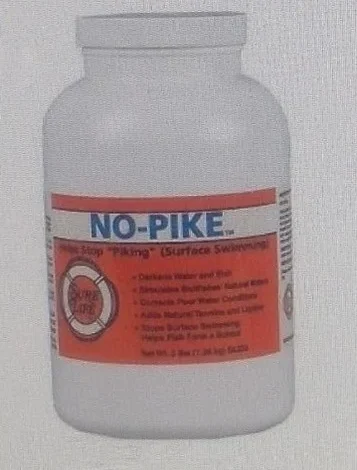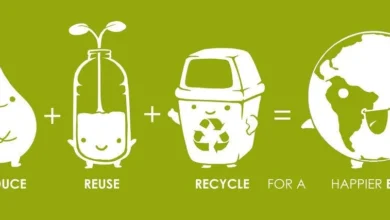What Is “nopike” / NO-PIKE™?

When you search for nopike, you’ll often come across NO-PIKE™, a commercial product used in baitfish and aquaculture systems intended to curb a behavior known as piking — that is, fish swimming near the surface, scattering, or abandoning a tight schooling formation. The concept behind nopike is effectively “no pike behavior” — ensuring baitfish or small fish don’t stay at the surface or appear stressed.
The official description of the product states that NO-PIKE™ stops surface swimming (“piking”) by utilizing natural tannins and lignins to replicate more natural water conditions.
In simplest terms: nopike is an additive / approach to prevent fish from exhibiting surface-swimming stress behavior in tank or bait setups.
Why Fish Exhibit “Piking” Behavior
To understand why nopike is considered, we must first understand piking itself:
-
Definition: Piking is when fish (especially baitfish) swim close to the surface, cluster in corners, or break schooling patterns.
-
Causes / triggers:
-
Poor water chemistry — lack of certain organic compounds (like tannins) can make tanks feel “unnatural.”
-
Excess illumination / light penetration — overly clear, bright water might stress fish.
-
Insufficient cover or shade — fish may feel exposed without visual shelter.
-
Water condition shock — rapid changes in temperature, pH, or dissolved oxygen can trigger stress.
-
Inadequate hiding micro-structure — lack of fine particulate or organic matter can lead fish to react to the “sterile” environment.
-
When fish perceive their environment as unsafe or not like their home waters, they may try to escape to the surface or crowd away from suspicious regions. Over time, such behavior can lead to increased mortality, suppressed feeding, or reduced bait quality.
Thus, the logic behind nopike is to restore aspects of their native environment (in terms of water “feel”) and reduce stress.
How “nopike” / NO-PIKE™ Works: Mechanism & Ingredients
The effectiveness of nopike lies in its formulation and how it influences fish behavior and water characteristics.
Key Ingredients
-
Natural tannins: organic polyphenolic compounds derived from plants, wood, bark, etc. They impart a slight coloration and can act as mild antimicrobial agents.
-
Lignins: complex organic polymers in plant cell walls, often co-occurring with tannins in natural water systems.
These together simulate the organic composition found in many natural waters (e.g. ponds, streams) where baitfish evolved.
Mechanism of Action
-
Water coloration & shading
NO-PIKE™ will darken the water slightly, reducing harsh brightness or glare, making fish feel less exposed. -
Organic “feel” restoration
Adding tannins and lignins gives water a more “tannic” or humic feel, closer to natural systems that contain leaf litter, wood debris, decayed organics. Fish often respond more favorably to such environments. -
Behavior normalization
Once the environment feels more natural, fish are more likely to resume schooling behavior, drop away from the surface, and reduce stress. -
Concentration & dilution balance
The product is concentrated — for example, one tablespoon per 50 gallons is typical dosage according to the manufacturer.
It is important to note that nopike / NO-PIKE™ is not intended to fix all water quality problems — it is a supplementary measure to manage behavioral disorders tied to stress and unnatural water conditions.
Using “nopike”: Dosage, Procedure & Best Practices
To get the benefits of nopike, proper usage is essential. Below is a recommended guide.
Dosage Guidelines
-
Standard dosage: 1 tablespoon of NO-PIKE™ per 50 gallons (≈ 189 liters) of water
-
Scaling up:
-
One cup can treat ~ 400 gallons
-
Specific models: SL223 treats ~ 2,400 gallons; SL224 treats 9,600 gallons; SL225 treats ~28,800 gallons
-
Procedure Steps
-
Measure water volume
Confirm your tank or bait system’s volume in gallons or liters so dosing is accurate. -
Dilution
Pre-dilute the measured NO-PIKE™ in clean water (e.g. in a bucket) to avoid a local overdose. -
Even dispersion
Add the diluted solution in multiple locations or gently flow it in, rather than dumping in one spot, so it disperses uniformly. -
Monitoring
Observe for 24–48 hours. Look for reduction of surface swimming, better schooling motion, calmer fish posture. -
Reapply as needed
Over time, with water changes, feeding, and usage, the effect may diminish — you may need periodic top-ups.
Best Practices & Tips
-
Test in small scale first: Try a small section or sample of your tank to see fish response before full application.
-
Maintain baseline water quality: Ensure proper oxygenation, pH stability, ammonia and nitrite control. nopike should not replace fundamental water management.
-
Avoid excessive use: Overdosing may overly darken water or introduce too many organics.
-
Use with caution in sensitive systems: In very strict aquarium systems (especially sensitive species), test compatibility.
-
Pair with other feeding / bait products: The manufacturer claims NO-PIKE™ works well with their BETTER-BAIT™ or FINER-SHINER™ products.
Pros, Cons, and Considerations of Using “nopike”
As with any specialized additive, nopike / NO-PIKE™ has both benefits and caveats.
Advantages
-
Behavioral correction: Helps reduce stress behaviors such as surface swimming and scattering.
-
Natural approach: Uses plant-based, naturally occurring compounds (tannins, lignins).
-
Relatively low dosage: Because it is concentrated, a small amount can treat a large volume.
-
Aesthetic benefit for baitfish: Darkening may make baitfish appear more natural and healthy
Limitations & Risks
-
Not a water quality fix: It does not remove ammonia, nitrates, or solve oxygen deficiencies.
-
Possible visual impact: In highly transparent aquarium systems or display tanks, even slight coloration may be undesirable.
-
Accumulation: Over repeated use, organic load may increase, requiring filtration or water changes to manage breakdown products.
-
Species sensitivity: Sensitive species might react poorly to added tannins or changes in water chemistry.
-
Cost & sourcing: In some regions, procurement and cost might be a barrier.
Things to Consider Before Using
-
Start with small-scale testing before large deployment.
-
Ensure good filtration and water circulation to manage organic buildup.
-
Regular water quality checks (pH, oxygen, ammonia) remain essential.
-
Use cautiously in mixed species tanks, especially if one species is more sensitive to water chemistry changes.
Real-World Feedback & Use Cases
While scientific literature on nopike / NO-PIKE™ is limited, user reports and product documentation provide useful insight.
-
On the official product listing, the manufacturer claims NO-PIKE™ is more concentrated than other products and asserts that fish will resume schooling once added.
-
Users in fishing forums say that after using NO-PIKE™, baitfish often reduce surface crowding and appear calmer.
-
Some warn that in very clear, high-end ornamental aquaria, the coloration effect may not be acceptable, suggesting niche use in bait systems or non-display tanks.
-
The social media presence is modest; for example, the Instagram handle @nopike_ currently has no public posts.
-
There is even a “Team-Nopike” page on Facebook, indicating perhaps community or brand-affiliated groups.
These anecdotal reports support the notion that nopike works under certain conditions but isn’t a guaranteed solution for every system.
Conclusion & Final Thoughts
In the world of baitfish management and aquaculture, nopike (or more precisely NO-PIKE™) offers a targeted behavioral solution: suppress “piking” behavior by creating a more natural environmental feel via tannins and lignins. It aims to reduce surface swimming stress, encourage school formation, and improve fish comfort.
However, nopike is not a cure-all — it complements, but does not replace, good water chemistry control, filtration, oxygenation, and sound husbandry practices. Success depends on correct dosage, system compatibility, and vigilant observation.
If you’re raising baitfish, running a bait tank, or handling small schooling species that suffer from surface scattering, nopike may be a useful tool in your toolkit. But always test it first, monitor carefully, and treat it as an enhancement — not a fundamental fix.




